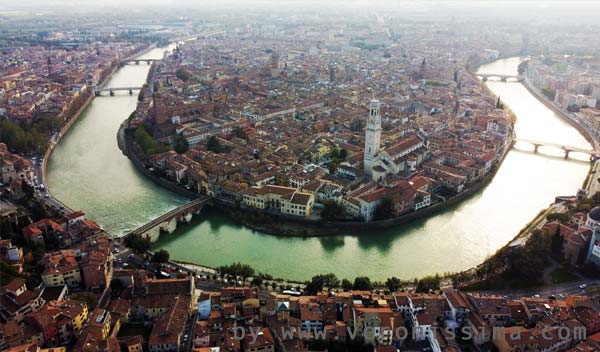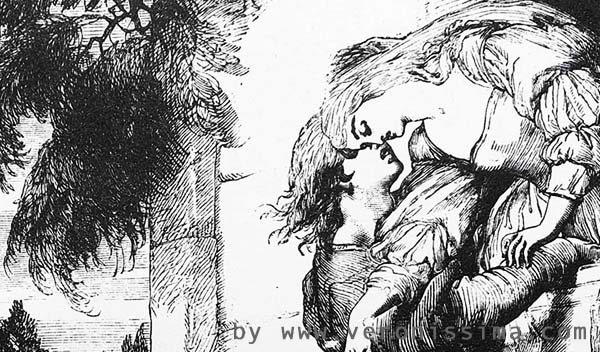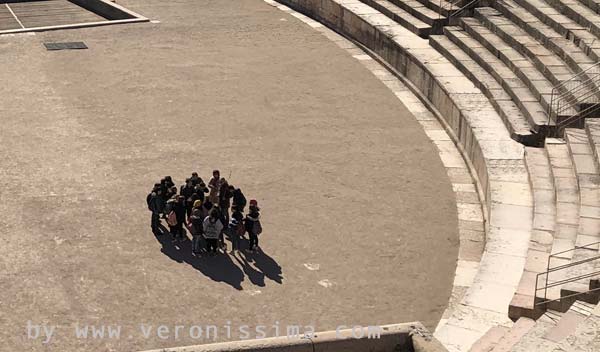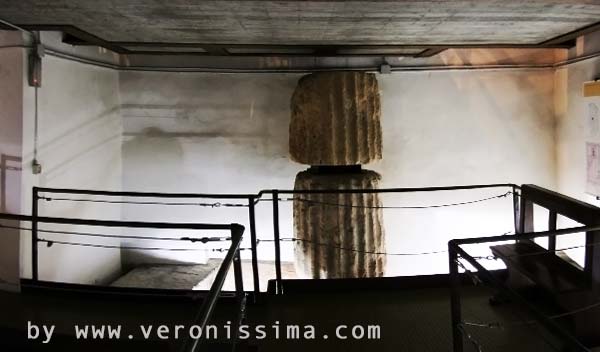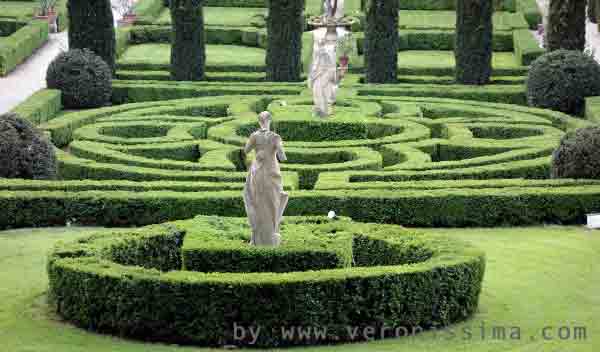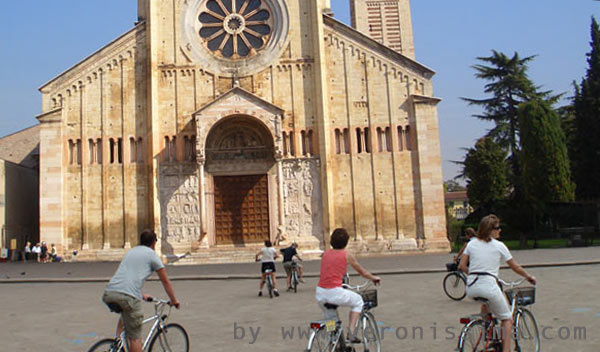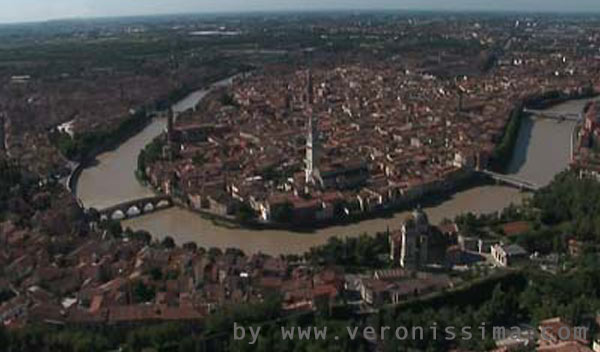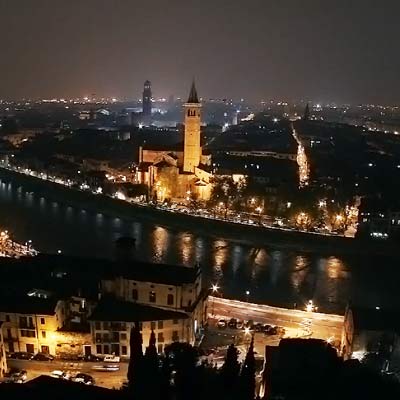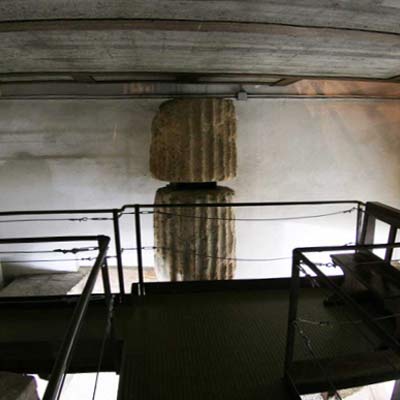Underground Verona
Exclusive itinerary created by Verona tour guides to discover the mysterious and fascinating underground city. An unusual tour for those looking for something special during their stay in Verona.
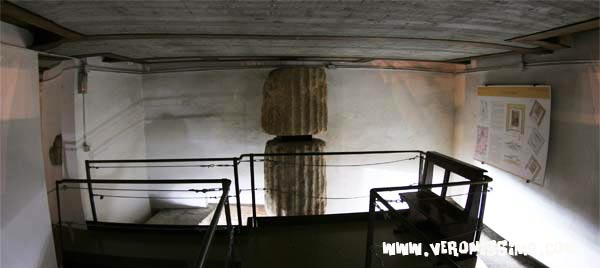
Oncoming Tours
Inquiries & Bookings:
+39 333 2199 645 info@veronissima.com P.I. 03616420232 C.F. CPPMHL74L13L781C
Verona underground sites
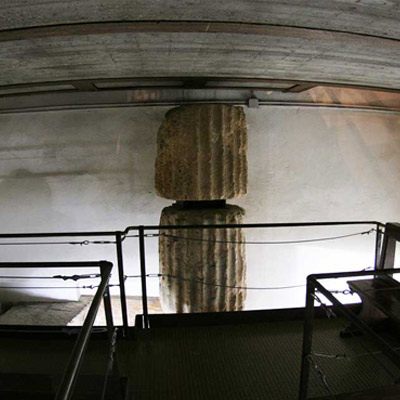
Remains of Roman domus of 400 square meters (4.305 sq ft) in the basement of a bank in Verona city center.
Like many Italian cities, Verona is made up of "layers", each of which bears signs and remains of past civilizations. The city is a sort of "time machine", the deeper you go, the further back you go in past eras. Verona, however, is special, not only for the abundance of finds, especially from the Roman era, but also for their easy accessibility.
Many findings, discovered over the years, have been left in the place where they were found, enhanced with architectural and engineering solutions of great creativity, and that allow you to admire them in their original location, from two to four meters below street level.
It may also interest you
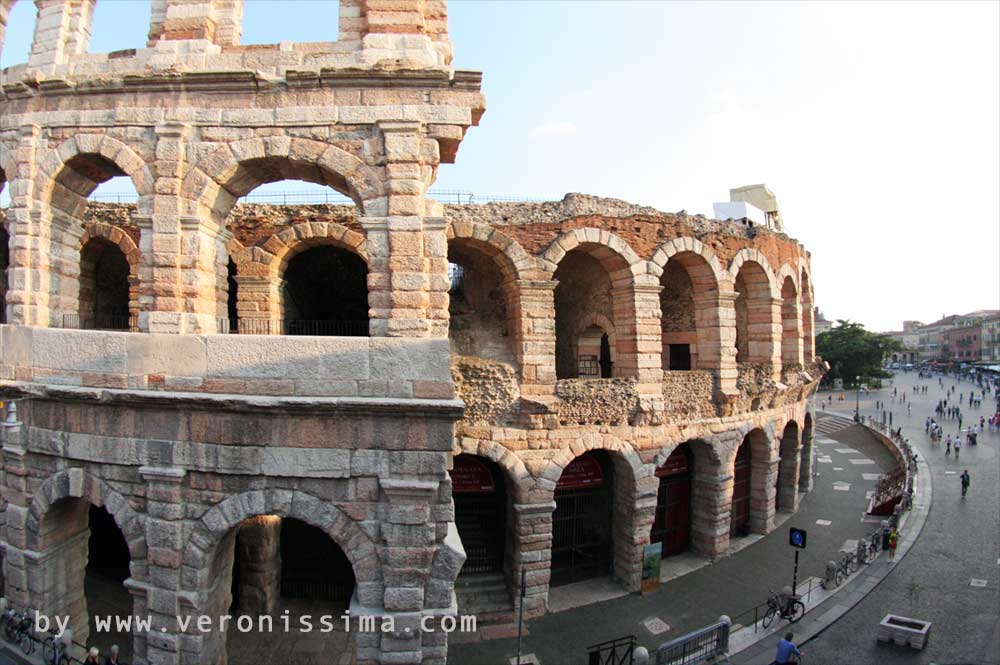
Roman Verona guided tour
Find outThe Domus in Nogara square
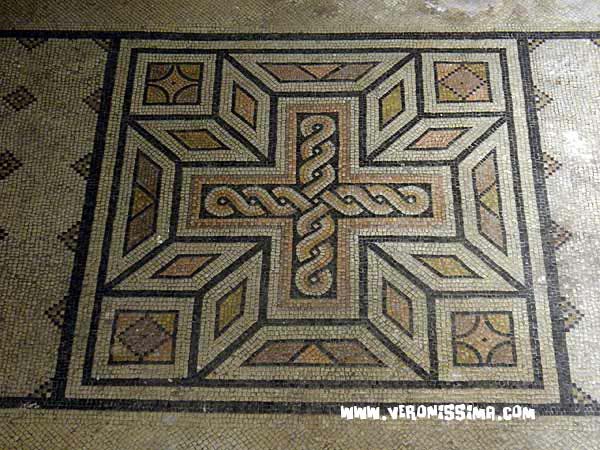
Detail of the mosaic floor of one of the rooms of the Roman domus.
Among the many underground sites that can be visited in Verona there are the remains of an entire Roman domus. The domus was the sumptuous dwelling of patrician families. It is an exceptional site where, a few meters below street level, you can clearly make out the remains of the impluvium (the basin for the collection of rainwater), atrium and peristyle (inner courtyard and portico), the rooms with still mosaic floors and the hypocaust, the sophisticated floor heating system.
The Roman Temple
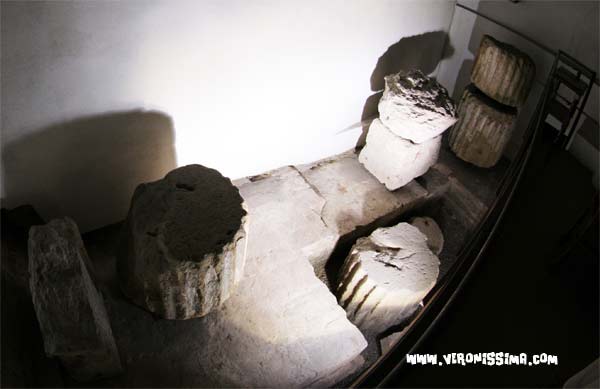
The remains of the colonnade of the city's main Roman temple.
In Piazza delle Erbe square, the ancient forum of Roman Verona, in the basement of Palazzo Maffei, under the wine cellar of a fancy restaurant, are the remains of the capitolium, the main temple of every Roman city. The place of worship dates back to the first century before Christ. There was venerated the three main Roman gods: Jupiter, Juno and Minerva.
The temple was located on the short side of the forum, along the main road. It stood on a large raised platform and was surrounded by a portico accessible by a staircase.
In the underground site of Piazza Erbe, 9 meters (27 ft) below street level, are visible the remains of the brick foundations, the blocks of limestone of part of the threshold, some columns and a marble podium probably of a statue.
Scaligeri Underground Museum
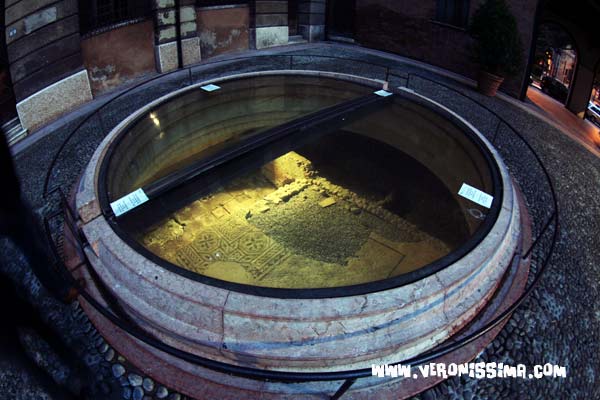
One of the large circular floor windows of the Scavi Scaligeri museum. You can have a glimpse of the Roman mosaics below.
Not far Signori square is the "International Centre of Photography Scavi Scaligeri", a unique museum set up a few meters below street level. The exhibition spaces are located in a vast archaeological area that includes one of the blocks of the typical grid of a Roman city. This is a very complex and articulated area, with remains ranging from the first century B.C. to the fifteenth century. A.D., which allow you to make a real journey through the history of Verona and Italy.
Among the most interesting finds of the Roman era are the mosaics of two domus and a perfectly preserved paved road complete with sidewalk and sewer (cloaca) below.
Next to the Roman remains there are signs of the sudden and dramatic change of Verona between the fifth and sixth centuries AD. Remains of dwellings built in a haphazard manner with recycled materials, traces of the great fire at the end of the sixth century A.D., and Longobard tombs of a small cemetery, perhaps annexed to a monastery.
N.B. At the moment the museum is not accessible to the public because of restoration works whose duration is unknown.
If you want to know more
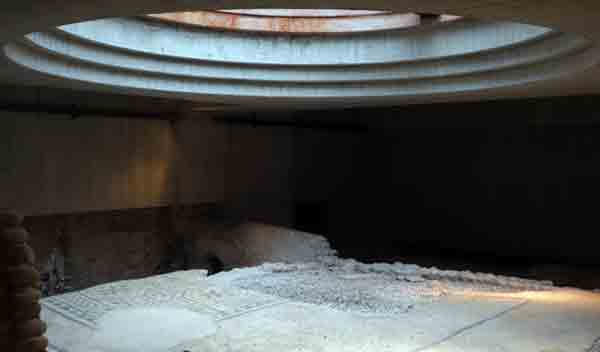
Scaligeri Undeground Museum
Find OutThe Curia
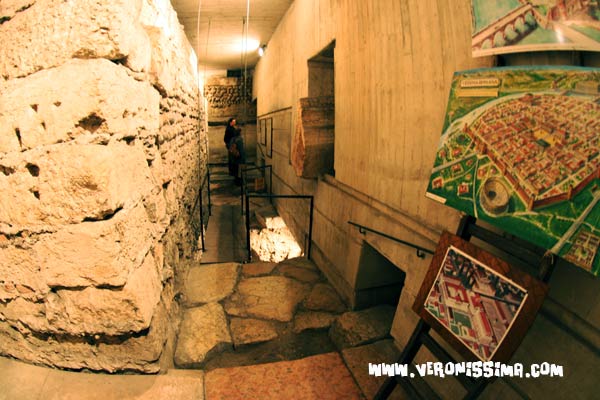
The pavement of a Roman road, the basement of a medieval tower house and at the bottom the foundations of the ancient curia.
Close to Piazza Erbe, the ancient forum of Roman Verona, in the cellars of one of the most famous restaurants of the city, you can admire an underground archaeological area that preserves the remains of the curia, a Roman public building, and a road. The buildings date back to the first century A.D.. There are also 37 meters of the external facade of the wall of a religious complex perhaps dedicated to the imperial cult. Along the wall of the curia is preserved a Roman road of which you can appreciate the width, the sidewalks and, in the center, the cloaca (sewer) that ran for its entire length. In the Middle Ages, a tower house was built on it with recycled material. The friendly and helpful owner of the restaurant has prepared plenty of explanatory material with illustrated tables and a model that helps the understanding of the findings.
Corte Sgarzarie
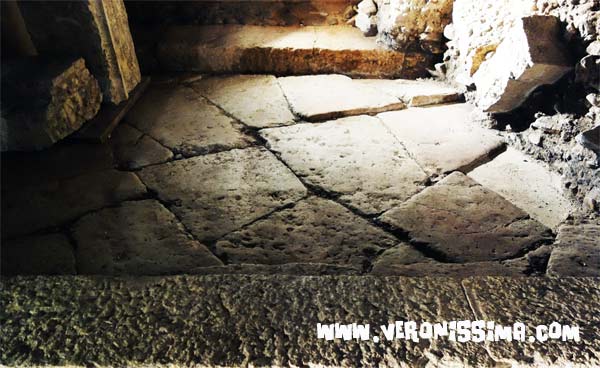
Stone pavement of a Roman pedestrian street that ran alongside the capitolium arcade.
After a long excavation and consolidation work, since January 2014 the archaeological site of Corte Sgarzarie can be visited. These are the remains of a portion of the cryptoporticus of the Capitolium complex, the main temple that stood near the forum, now Piazza delle Erbe. The cryptoporticus was a long underground corridor. It ran under the large platform that supported the temple itself. In the site is clearly visible a portion of the pillars and arches that supported the vault of the cryptoporticus collapsed, as well as some of the windows that gave a little light and air to the long corridor.
The site is characterized by a great complexity, with layers of the Republican, Late Imperial and Early Medieval periods that overlap and intersect. In addition to the remains of the cryptoporticus, it is possible to admire the perfectly preserved pavement of a Roman pedestrian street, a tower and another building, perhaps an ice-house, dating back to the early Middle Ages.
The site of Corte Sgarzerie is ideal for an educational tour of underground Roman Verona. Children on a field trip will be able to understand the process of debris accumulation and stratification typical of ancient Italian cities during the centuries following the end of the Roman Empire.
Other underground sites
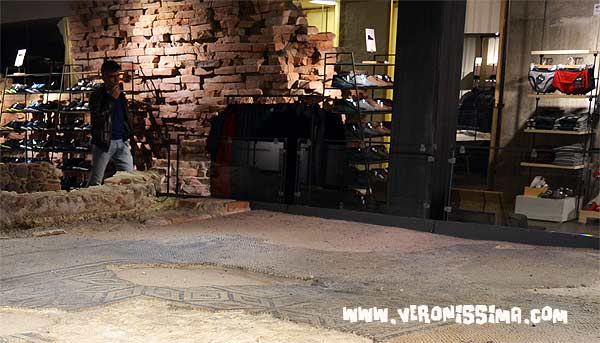
The mosaic of a Roman domus, a medieval well and more in the background the wall of the Republican age. All in the basement of a downtown clothing store.
Other finds that can be included in this guided itinerary to discover underground Verona are the remains of the walls of Gallieno or, according to more recent studies, of Teodorico, which can be found at times in various corners and hidden alleys of the city where, by means of special slits, it is possible to appreciate the depth. Near the complex of the Cathedral then, in several points below the church of Sant'Elena and the cloister of the Museo Canonicale, you can admire the splendid mosaics of some of the first early Christian churches of Verona. At Porta Leoni, various excavations carried out in the 1980s have brought to light the remains of the perimeter walls of the gate and the bases of the two external watchtowers, maintaining them in their original position about two meters below street level. Remains of domus with their mosaics can also be admired on the underground floors of some stores and boutiques in the center and in the cellars of a convent.
Planning a tour
Some of the finds are freely accessible, others, being in the basement of private buildings, can be visited by appointment by agreement with the property. Included in the guided tour are the organization and the reservation of all the structures involved, but it is advisable to plan at least a few weeks in advance your trip to Verona in order to see as much as possible.
Guided tours in the underground city can be structured as half-day or full-day visits. The monuments to be included in the tour will be selected according to the time available and the availability of the structures that host them.
Book you Verona underground tour:
+39 333 2199 645 info@veronissima.com P.I. 03616420232 C.F. CPPMHL74L13L781C

 IT
IT 日本
日本 DE
DE FR
FR 中文
中文 ES
ES